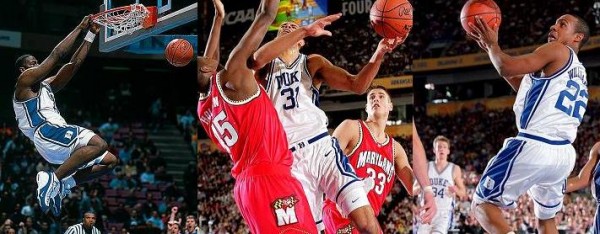Posted by nvr1983 on February 15th, 2009

Welcome back to another edition of Boom Goes the Dynamite. I’m back as your semi-regular host after a day off with John Stevens covering for me. Today is a kind of weird day of basketball with the best games later in the day going head-to-head against the NBA All-Star game. So hopefully everyone will be sticking with us throughout the day and the real basketball fans (the ones who actually like defense and competition) will stay with us into the night.
1:00 PM: Our early games today are Illinois at Indiana on CBS and Clemson at Virginia on ESPN Full Court and ESPN360.com. We’ll be updating you with highlights of those games throughout the day, but like always if there is something going on that we are missing or we make a mistake leave us a message in the comment section.
1:10 PM: Illinois is up 10-7 early. Bruce Weber‘s club must be riding high after their amazing comeback at Northwestern in their last game. Clemson is tied 3-3 in Charlottesville with 15:54 left in the first half. I’m guessing today is Sean Singletary day at UVA today based on the parts of the pre-game that I caught. Singletary, a 3-time 1st team All-ACC player, is one of three players in ACC history (Danny Ferry and Johnny Dawkins being the others) to have 2,000 career points, 500 career assists, and 400 career rebounds.
1:25 PM: Illinois is up 15-7 as we go to a TV timeout. CBS just showed a graphic about Indiana’s tough losses this year by featuring the games they led, but lost. You know the Hooisers are having a bad year when having a lead of 2 points at some point during the game is highlighted as a tough loss. Meanwhile, UVA is up 16-7 with 11:54 as they head into a timeout as well.
1:30 PM: I just noticed the electronic board on the side of the court at Assembly Hall. I guess it’s a nice fan friendly feature and probably generates some revenue through ads, but I think it looks horrendous in this famous arena. I haven’t noticed it at Cameron Indoor, but I think they should avoid it in the historic arenas.
1:40 PM: Jeff Jordan just hit a jumper for Illinois. As we noted before, he was recently was given a scholarship at Illinois. For those of you who haven’t seen him play, we think you might have missed his only big play of the day if his performance this season is any indication of what we can expect today. He’ll probably be out there quite a bit since Indiana is awful so watch for #13 on Illinois.
1:45 PM: UVA is up 22-16 coming out of a timeout with 5:11 left in the first half. Illinois is up 27-13 with a little less than 5 minutes left in the first half. I’ll be focusing on the UVA-Clemson game for now unless the Illinois-Indiana game gets interesting.
1:55 PM: UVA is up 33-25 at half. That 3 by Terrence Oglesby with a little over a minute left in the first half was Clemson’s first of the day after the Tigers missed their first 10 straight. The Cavaliers might have a chance if the Tigers continue to have difficulty hitting from the outside. Trevor Booker has had a big first half with 10 of Clemson’s 25 points, but it wasn’t enough as none of the other Tigers are playing well today. Illinois is up 38-21 at half.
Read the rest of this entry »
| boom goes the dynamite
| Tagged: acc, adrian thomas, al skinner, arizona state, beanpot, boom goes the dynamite, boston college, boston university, bowling green, brian asbury, brian zoubek, bruce weber, butler, calvin baker, carlos boozer, chester frazier, chris duhon, clemson, coach k, daniel hackett, danny ferry, danny green, davidson, demar derozan, deon thompson, depaul, dick vitale, duke, Dwayne Collins, eastern michigan, erin andrews, gerald henderson, greg anthony, greg paulus, illinois, indiana, jack mcclinton, james harden, jason williams, jeff jordan, jeff pendergraph, jeff teague, jeff trapani, jimmy graham, johnny dawkins, jon scheyer, julian gamble, kc rivers, kyle mcalarney, kyle singler, lance hurdle, lance thomas, louisville, loyola (il), mac, matt howard, miami (fl), michigan, mike dunleavy jr, mike scott, mike tisdale, northwestern, notre dame, oj mayo, oliver purnell, pittsburgh, rakim sanders, reggie jackson, sean singletary, stephen curry, sylven landesberg, terrence oglesby, tim floyd, trent meacham, trevor booker, ty lawson, tyler hansbrough, tyler roche, tyrese rice, ucla, uconn, unc, usc, usf, virginia, wake forest, wayne ellington
Share this story





















































